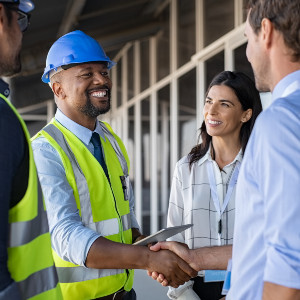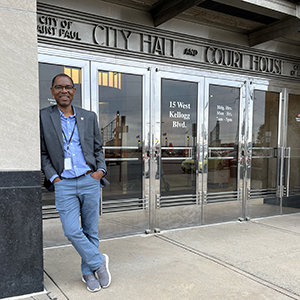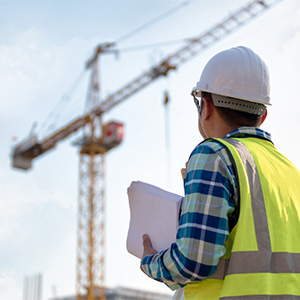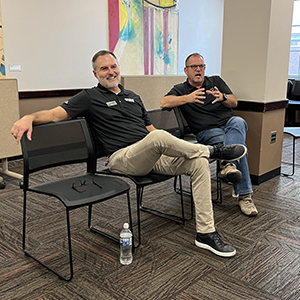Construction management can be a highly rewarding career, particularly for those adept at overseeing both projects and the safety of their teams. As a manager on a construction site, you are not only dealing with the complexities of building but also the significant responsibilities that come with operating heavy machinery and mitigating other onsite risks. Recent statistics from the United States Bureau of Labor Statistics (BLS) highlight the urgency of this role: fatal construction accidents saw an almost 6% increase from 2020 to 2021.
Now more than ever, as a construction manager, it is critical that you ensure your team stays safe. In addition to encouraging them to trust their normal “common sense,” this can include offering comprehensive training in fall protection and the correct use of personal protective equipment (PPE). Your proactive approach to safety can significantly influence the well-being of every worker under your supervision.
1. Understand the Safety Regulations
Safety rules and regulations are in place specifically to protect construction workers, so it's crucial to be aware of which construction safety guidelines and regulations apply to your team.
Familiarize with OSHA Standards
The Occupational Safety and Health Administration (OSHA) plays a crucial role as the regulatory body responsible for setting and enforcing safety standards on construction sites. As a construction manager, it is imperative that you familiarize yourself and your team with OSHA's safety regulations applicable to your projects. Key areas to focus on include fall protection and the safe operation of construction machinery.
For example, OSHA requires that any work over six feet in height above ground must have fall protection measures such as guardrails, safety nets, or personal fall arrest systems in place. Additionally, for the safe use of construction machinery, OSHA mandates that all equipment must be regularly inspected and operated by trained personnel only. This includes ensuring that all equipment operators have the necessary certifications and are aware of the specific safety protocols for each piece of machinery.
By integrating these OSHA standards into your daily operations, you can significantly enhance the safety and efficiency of your construction site.
Company-Specific Safety Policies
In addition to OSHA regulations, construction companies often have their own organizational safety plans with specific procedures and policies established.
2. Wear the Proper Safety Gear
The right safety gear can make all the difference in preventing accidents on construction sites.
Personal Protective Equipment (PPE)
All workers should don appropriate personal protective equipment for construction sites. Some examples of PPE that may be worn on a construction site include:
- Hard hats
- Earplugs
- Safety glasses or goggles
- Gloves
- Heavy shoes
Regular Inspection and Maintenance of Safety Gear
Unfortunately, PPE doesn't last forever. Workers should regularly inspect and assess their gear for signs of wear and tear. Damaged or worn gear should be replaced as soon as possible to maximize job site safety. Plastic hard hats, for example, do not last forever as the plastic can degrade over time with exposure to sun.
3. Participate in Safety Training Sessions
Safety meetings and training sessions should be provided regularly.
Importance of Ongoing Training
Construction safety guidelines and best practices can change, which is why regular safety meetings are so essential. Ongoing training keeps construction workers up to date on the latest safety practices and reiterates the importance of construction site safety.
Specialized Training for Specific Tasks
For workers involved in specialized tasks or handling hazardous machinery, additional training may be necessary to prevent an accident or injury. Hosting a task planning meeting where safety issues are reviewed and the processes employed are planned prior to execution is an important element of an on-site safety plan.
4. Stay Alert and Be Aware of Surroundings
A number of construction accidents occur when workers become complacent and fail to remain aware of their surroundings. Staying alert on the job can help workers prevent injury to themselves or others.
Identifying Potential Hazards
Construction workers should constantly be on the lookout for potential hazards, ranging from slip-and-fall perils to equipment malfunctions and accidents from tools. Hazards should be reported to a supervisor and addressed promptly.
Maintaining Focus and Concentration
Vigilance and awareness should be an everyday part of working on a construction site. Workers should avoid distractions (like cell phone use) that could break their concentration and put them at risk on the job. Get in the habit of looking up, looking down, and looking around, especially where work may be happening above you.
5. Use Tools and Machinery Safely
Improperly handled tools and heavy machinery are a common cause of accidents, so it's critical that workers are trained on the proper handling and operation of all construction site gear. Safety extends to not only the tools, but also the airborne effects of tool operations that may be unseen.
Proper Handling and Operation
Only workers who have been trained to use certain equipment or tools should operate it. All operators of heavy machinery, such as forklifts and cranes, should have received extensive safety training.
Regular Checks and Maintenance
Equipment and tools should be regularly inspected for signs of premature wear and tear. Damaged or unsafe equipment should be locked out to prevent accidental use until the issue can be addressed. Likewise, all construction sites should have a reliable system in place for reporting concerns about tools, gear, and other general safety issues.
6. Keep a Clean and Organized Worksite
Maintaining a clean and organized construction site is crucial in minimizing the risk of accidents and ensuring the project remains on schedule. Accidents are more likely to occur in a cluttered or disorganized environment, making effective housekeeping practices essential. Trip and falls increase with a disorganized site.
Managing Worksite Clutter and Importance of Orderliness
Construction sites must be kept as organized and clutter-free as possible. This involves the immediate removal of supplies and tools that are not in active use and ensuring proper storage solutions, such as off-site work trucks or construction trailers. Sawdust and debris, commonly overlooked hazards, must be managed through a robust construction dust management plan to prevent injuries and respiratory issues.
Proper Disposal of Waste and Regular Cleaning Schedules
Properly disposing of waste, especially hazardous or flammable materials like hydrofluoric acid and other chemicals, is vital for maintaining safety. Moreover, to keep the site safe and orderly, it is important that supervisors establish regular cleaning schedules. These schedules should clearly define who is responsible for specific cleaning tasks each day, eliminating confusion over responsibilities and expectations, and contributing to a safer work environment.
7. Follow Proper Lifting Techniques
Construction workers should also be trained on the proper lifting techniques when carrying supplies and materials on a construction site to minimize the risk of back injury and other ailments.
Avoiding Back Injuries
To reduce the risk of back strain and back injuries, construction workers should always lift by bending at the hips and knees (rather than using the legs alone). Meanwhile, it's essential for workers to avoid lifting heavy objects above shoulder level. Turning or twisting while lifting a heavy object should also be avoided to prevent back strain.
In some cases, an object may be too large for a single worker to lift; this is where knowing when to ask for help from another worker can make all the difference in preventing injury.
Using Mechanical Aids
Mechanical aids, such as pallet trucks, forklifts, and scissor lift tables, can be extremely helpful in handling heavy materials and supplies while minimizing the risk of back injury. Construction workers should be trained on the mechanical lifting aids available to them and how to use them safely.
8. Implement Fall Protection Measures
Unfortunately, falls are a common type of construction site accident—yet almost all falls can be prevented with the proper safety measures in place.
Understanding Fall Hazards
All construction workers must understand common fall hazards and how to detect them in the workplace. Such hazards in construction range from ladders and scaffolding to roofs and other elevated areas, so workers should be aware of these inherent dangers and how to keep themselves safe.
Fall hazards can be minimized by wearing the proper footwear and keeping work areas clear of debris. Still, workers should also be trained to report ongoing fall hazards to their direct supervisors.
Using Fall Protection Equipment
Fall protection equipment is essential in drastically reducing the risk of fall injuries on construction sites. It is crucial that workers have access to appropriate fall protection devices whenever they are working in areas that present fall hazards. Common examples of fall prevention gear include:
- Fall Arrest Systems: These include full-body harnesses, shock-absorbing lanyards, and retractable lifelines. Fall arrest systems are designed to safely stop a worker who is falling.
- Fall Restraint Systems: These systems prevent workers from reaching an edge from which they could fall. Components typically include a fixed-length lanyard attached to both the worker’s harness and a secure anchor point.
- Fall Prevention Devices: Examples include guardrails, safety nets, and toe-boards installed around elevated platforms to prevent falls.
All workers should receive thorough training on how to effectively use these types of equipment and understand the appropriate situations for each type, ensuring their safety while working at heights.
9. Report Unsafe Conditions Immediately
In some cases, accidents may happen simply because workers don't feel comfortable reporting unsafe conditions to their supervisors or management. This is why it is crucial for construction companies to create a culture of safety reporting and ensure workers know their safety is truly a top priority on every job.
Encouraging a Culture of Safety Reporting
Workers should always be encouraged to report safety concerns at any time during a construction project. It should be clear to each worker to whom hazards and concerns should be reported. Every potential safety issue should be investigated, taken seriously, and remedied as soon as possible.
Many construction sites have "concern boxes" or a similar system in place where workers can submit safety concerns anonymously. This can be a great way to encourage workers to speak up when something isn't right.
The Role of Supervisors in Addressing Safety Concerns
Supervisors are typically the first people to hear about safety concerns on a construction site, so it's critical that all supervisors understand how to address them properly. In some cases, supervisors may be able to remedy issues themselves. However, it may sometimes be necessary to escalate the situation to a higher level of management in order to resolve it properly.
10. Stay Hydrated and Take Breaks
Last but not least, construction workers should prioritize their own health and wellness by staying hydrated and knowing when to take breaks on the job.
Preventing Heat Stress and Dehydration
Working in the heat is not only exhausting but can also be downright dangerous for construction workers. These workers can prevent heat stress and minimize the risk of heat stroke by staying hydrated and wearing light clothing and sunscreen whenever possible.
Recognizing the Signs of Fatigue
Workers should also be trained to recognize common signs of fatigue, heat exhaustion, and even heat stroke on the job. Common signs of heat stroke include:
- Headaches and/or dizziness
- A sudden lack of sweat or perspiration
- Shallow breathing
- Hot, red skin
Workers who display signs of heat stroke or heat exhaustion should be pulled from the job site to recuperate inside an air-conditioned work truck or trailer. In some cases, medical attention may be necessary. All workers should look out for themselves and one another.
Learn More About Construction Management Today
By following the construction safety tips outlined above, workers can protect themselves from common construction site hazards while maintaining safer worksites overall. From there, it may be possible to minimize the number of tragic accidents experienced within the industry each year.
Looking to take your construction expertise to the next level? It may be time to consider a degree or certificate in construction management. At The University of Minnesota College of Continuing and Professional Studies, we're proud to offer both a bachelor's degree in construction management and a construction management certificate to help sharpen your skills. Get in touch to learn more today!
Sources
- Construction Management Bachelor's Degree
- Construction Management Certificate
- Contact Us
- 11 Construction Safety Tips to Avoid Construction Site Hazards
- 11 Ways to Help Keep Workers Safe in the Construction Industry
- Construction deaths due to falls, slips, and trips increased 5.9 percent in 2021
- Mayo Clinic: Heatstroke
- Mayo Clinic: Heat exhaustion








